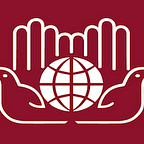Redefining Refugee
“[The] number of refugees from conflict are less than those of climate change.”
From this quote, Dr. Mark Little echoed a critical point during his lesson ‘Case study: Typhoon Haiyan,” taught during the International Diploma in Humanitarian Assistance. The discussion of people displaced by climate change is a long overdue discussion that Dr. Little brought to the forefront.
Along with climate change, the definition of a refugee, as stipulated by the United Nations came into critique. The United Nations 1951 Refugee Convention defines a refugee as:
“A refugee is someone who has been forced to flee his or her country because of persecution, war, or violence. A refugee has a well-founded fear of persecution for reasons of race, religion, nationality, political opinion, or membership in a particular social group.”
While defined in writing, this definition does not always hold weight in practice because of its inability to include the rising number of displaced people due to the effects of climate change. This fact of the matter is in spite of the United Nations’ statements that climate change may amplify other reasons for people to seek refuge. The term climate refugee, even though not acknowledged by the United Nations, is an important one today. The world is seeing a drastic change in climate where the effects have no bounds.
Even though the United Nations has not officially recognized climate refugees, certain countries have taken the lead on addressing displaced people due to the climate. For example, a statutory body that has acknowledged the legality of climate change is the African Union in the 2012 Kampala Convention. This Convention was the first ever international agreed-upon document to address “man-made natural disasters,” thus covering climate change and climate refugees.
Along with the Kampala Convention, there is the Nansen Initiative (2012), which was steered by Norway, Switzerland, Australia, and Bangladesh. This movement led to the Protection Agenda (2015), an agenda to reduce vulnerability to displacement risk, build resilience, [create] migration with dignity, and [determine] planned relocation. Additionally, there exists The Platform on Disaster Displacement (2017), which supported an approach of integration of effective practices and encouraged data collection along with the promotion of policy and normative development in gap areas. The most important international document to address climate change, however, is the Paris Agreement, although countries such as the United States and Brazil have dropped out.
During Dr. Little’s lecture, the solutions brought up to address climate refugees ranged from including climate change as the 6th criteria to the definition of refugees to integrating refugees into the Paris Agreement. However, as reiterated by Mark Little In the lesson “if there is no political Will [actually to enforce the law/agreement], it will be left as soft law.”
Written by Aninwaa Anin-Yeboah, Innovation & Design Intern, Summer 2019
About the IIHA
The Institute of International Humanitarian Affairs (IIHA) prepares current and future aid workers with the knowledge and skills needed to respond effectively in times of humanitarian crisis and disaster. Our courses are borne of an interdisciplinary curriculum that combines academic theory with the practical experience of seasoned humanitarian professionals. The IIHA also publishes on a wide range of humanitarian topics and regularly hosts a number of events in the New York area, including the annual Humanitarian Blockchain Summit and Design for Humanity Summit.
For media inquiries, please contact: Camille Giacovas, Communications & Research Officer, IIHA cgiacovas@fordham.edu
For IDHA Inquiries please contact: Laura Ortiz, IDHA Administrator lortiz34@fordham.edu
